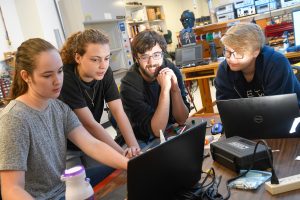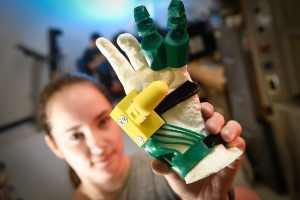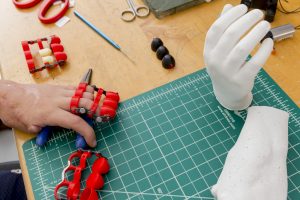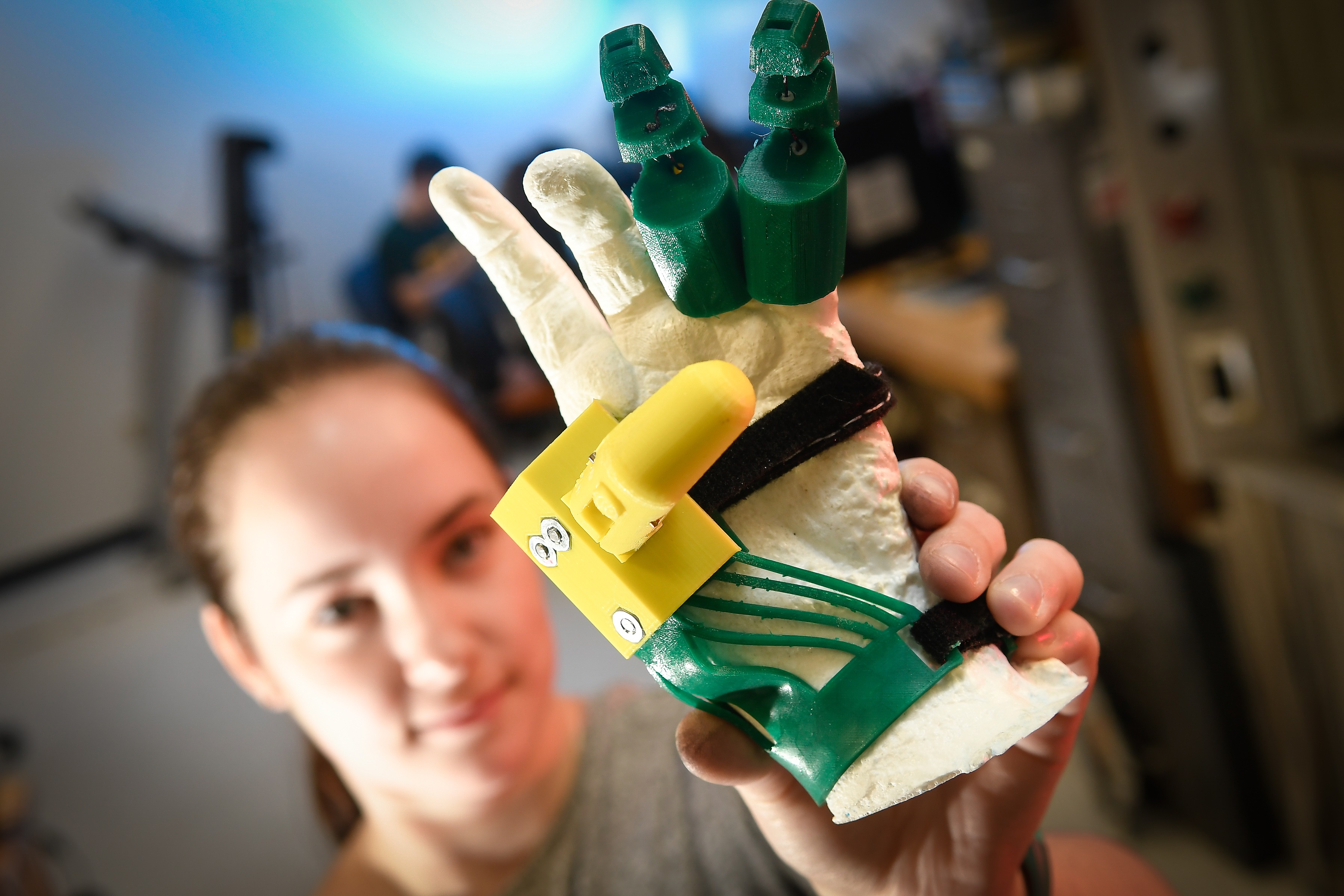
Hi! My name is Rachael Meacham, and I’m a rising sophomore, majoring in mechanical engineering. I am in the Honor’s Program and was enrolled in The Clarkson School this past year.
I have spent the past nine weeks of my summer here at Clarkson doing summer research, with Professor of Mechanical & Aeronautical Engineering Kevin Fite, developing prosthetic fingers. We are using 3-D printing to produce an inexpensive, lightweight and durable prosthesis for a local client. A group of students and I are designing two finger systems and a thumb in order to help restore some of the functionality he has lost.
You may be wondering, “How does a first-year college student get involved with something like this?” Well, it was surprisingly simple.
The Honors Program encourages students to become involved with extracurricular activities, and, since I am debating whether to attend grad school, I decided early on that I wanted to start doing research. The Honors Program has a summer research program that allows incoming students to come to campus for five weeks in the summer. This was a great opportunity to gain experience before taking any classes at Clarkson. I made many friends and got to know the campus a bit before classes started. (I still got lost trying to find my physics lab on the first day…oops!) I learned so much in just five weeks, and I am very glad that I made the choice to come, even though it meant giving up part of my last summer at home before starting college. This experience helped me begin my research career.

At the start of the fall semester, I decided to change research projects. During the summer, I was researching in a chemistry lab, but I wanted to do something more related to my major. Since I am interested in biomedical engineering, I began reading about the projects of some of the professors working in the Center for Rehabilitation Engineering, Science and Technology (CREST). I found that Professor Fite had published papers on lower limb prostheses, and I was intrigued. I approached him during the first week of classes and asked if I could join a project in his lab. Thankfully, he allowed me to start a project designing 3-D printed prosthetic fingers. I worked on the project during the school year, and I have continued working through the summer.

There are two parts to this project: finger design and attachment. The finger design I have been developing is a continuation and improvement of my work from the spring semester. The finger is cable-driven and actuated by the movement of the user’s residual fingers. When a user bends their residual finger, the tension in the cable is increased. The prosthesis is printed with a flexible filament that allows for flexion and extension of the finger through joints made of thinner sections of material. The tension mechanism allows the cable to be secured to the user while remaining adjustable. This simplifies the fitting process.
For the attachment pieces, comfort is very important. If the prosthesis is uncomfortable, it is very likely that the person will not use the device. To provide smooth and soft attachment points, we are using silicone rubber and molding to create an exact fit. We use 3-D printed models of the client’s residual fingers to create sleeves to fit into the socket of the fingers. This also helps the finger to remain on the residual limb while in use.

The process for designing new prototypes is mostly trial and error. I design a part in a computer-aided design (CAD) program and print it with the 3-D printers in the lab. I then compare the changes that were made (to determine whether the design has improved) and decide what steps to take next. This sounds like a simple process — and it is — but it is time consuming. Improvements and issues are not always obvious, so many wrong turns can be taken along the way. This can lead to “solutions” that actually make the problem worse. After completing this process many times, my problem-solving skills have improved greatly.
Another complication of the project was a delay caused by the 3-D printers. As in every project, issues arise and work must be paused to fix them. In my case, the printers used in the lab did not properly print with the specific filament I have been working with. These struggles slowed progress, but they also forced me to learn more in order to solve the problem.
Fitting research into the busy semester and giving up the majority of my summer break can be hard, but it is very much worth it. I have gained invaluable experience and skills through my research. I have enjoyed working on an actual biomedical engineering project, rather than just taking classes. It has allowed me to make sure that I want to pursue a career in this field. Even though it can be frustrating at times, research has been a very rewarding experience. I have been able to spend my time on something that will impact a person’s life. I don’t know about you, but that seems really awesome to me!
Another cool thing about spending the summer at Clarkson is getting to see campus in a whole new light. There are very few people on campus, and everything is relaxed. I have been able to build friendships and do many fun activities after finishing working for the day. There is a beach not far from campus, and my roommates and I have had a few beach days this summer. There are some nice diners in town also!
I highly recommend getting involved with research during your time here at Clarkson. Even if you are not interested in grad school, it is a great way to apply some of the information you learn in class to real-world problems. There are a variety of projects, so, no matter your major or interest, you can find something that fits you!

